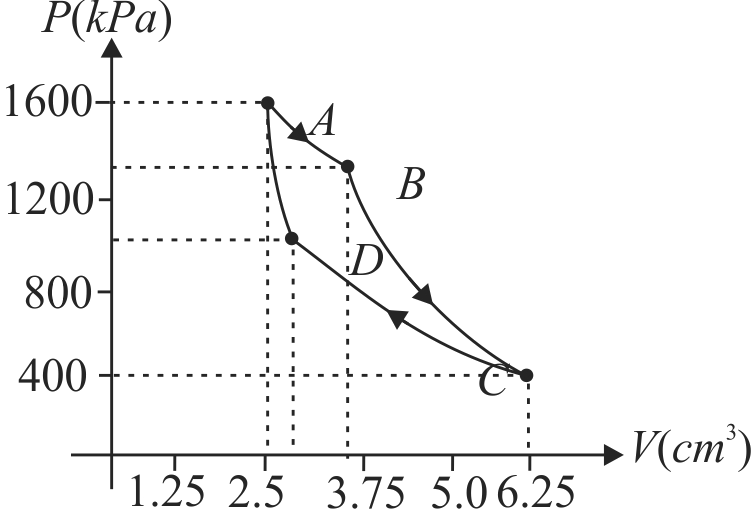371390 Two carnot engines \(A\) and \(B\) are operated in series. The engine A receives heat from the source at temperature \(T_{1}\) and rejects the heat to the sink at temperature \(T\). The second engine \(\mathrm{B}\) receives to its sink at temperature \(T_{2}\). For what value of \(T\) the efficiencies of the two engines are equal?
371390 Two carnot engines \(A\) and \(B\) are operated in series. The engine A receives heat from the source at temperature \(T_{1}\) and rejects the heat to the sink at temperature \(T\). The second engine \(\mathrm{B}\) receives to its sink at temperature \(T_{2}\). For what value of \(T\) the efficiencies of the two engines are equal?
371390 Two carnot engines \(A\) and \(B\) are operated in series. The engine A receives heat from the source at temperature \(T_{1}\) and rejects the heat to the sink at temperature \(T\). The second engine \(\mathrm{B}\) receives to its sink at temperature \(T_{2}\). For what value of \(T\) the efficiencies of the two engines are equal?
371390 Two carnot engines \(A\) and \(B\) are operated in series. The engine A receives heat from the source at temperature \(T_{1}\) and rejects the heat to the sink at temperature \(T\). The second engine \(\mathrm{B}\) receives to its sink at temperature \(T_{2}\). For what value of \(T\) the efficiencies of the two engines are equal?
371390 Two carnot engines \(A\) and \(B\) are operated in series. The engine A receives heat from the source at temperature \(T_{1}\) and rejects the heat to the sink at temperature \(T\). The second engine \(\mathrm{B}\) receives to its sink at temperature \(T_{2}\). For what value of \(T\) the efficiencies of the two engines are equal?


